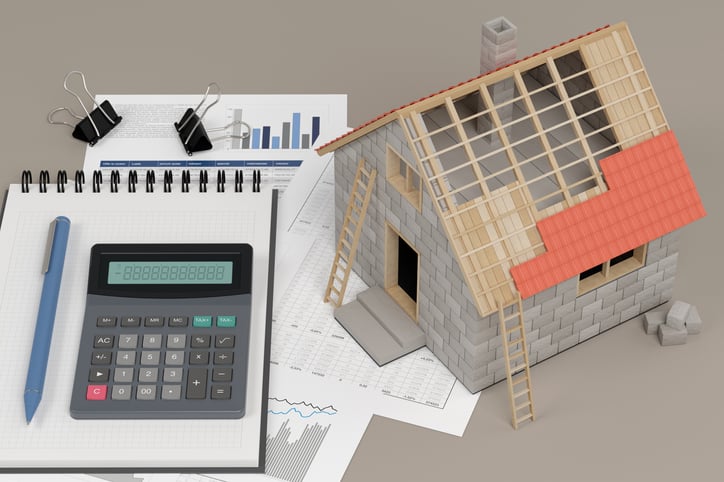
Editorial Note: This article was brought to you courtesy of Rose Morrison, managing editor of Renovated.com.
Construction is one of many industries implementing advanced technology to improve outcomes. Artificial intelligence (AI) and machine learning (ML) are just two ways you can see the building sector grow with technology. While there are numerous advantages, data analytics has emerged as a significant aid in construction management. Continue reading to learn more about leveraging data analytics to make smarter decisions in construction.
How Data Analytics Leads to Smarter Decision-Making
Equipping data analytics means you’ll improve your construction company’s operations, from planning projects to maintaining buildings in the future. Here are eight ways to leverage data analytics into smarter decision-making for your business.
1. Assisting the Project Planning
Leveraging data analytics starts with the project planning process well before shovels hit the dirt. Modern software employs data analytics to examine your past projects to see what improvements you can make for the future. For example, you can demonstrate your team’s efficiency by coming under budget and accurately estimating how much each project will cost. Showing efficiency makes you more competitive when submitting bids for clients.
Related Article:
Another way data analytics assists project planning is by analyzing the risks, such as delayed schedules and budget issues. A 2020 International Journal of Managing Projects in Business study finds weather conditions, material shortages, and financial problems are three of the most common causes of construction delays.
Data analytics mitigates these problems by using historical data to predict the future. This technology is intelligent enough to track swaths of data and identify trends to deliver measurable insights. With this information, you can be a more proactive construction manager and stand out amongst the competition.
2. Staying Within the Budget
Construction managers must be flexible for each project due to the ever-changing nature of the industry. Your approved budget at the beginning might become a hindrance as your crew starts working on the project. At this point, data is more valuable than ever because you need to know the pace the project is on for spending and resource consumption.

Data analytics enhances decision-making during the project by tracking costs as work continues. You’ll be able to visualize all expenditures and make the necessary adjustments. The advanced analytics make corrections easier by showing you variance analyses. These charts demonstrate where the overspending has occurred and remove any confusion.
Related Resources:
3. Strengthening Communication
Construction projects have numerous parties involved with decision-making, including architects, engineers, clients, and investors. Satisfying all groups means using data analytics to strengthen communication and provide transparency.
Cloud construction management is one of the best ways to improve communication. This software visualizes the data and is accessible to all parties any time. Cloud construction management provides charts, spreadsheets, 3D graphics, and other digestible information to inform everyone of the project’s current status. With this information, you and your team can make data-based decisions and improve satisfaction across the board.
4. Enhancing Cybersecurity
Cloud computing is accessible anywhere as long as you have Wi-Fi, making it easy for all parties to access on the go. Additionally, this software protects your data and confidential client information by employing best practices in cybersecurity.
With technology rising in the industry, construction must use advanced tactics to reduce liability. A 2022 Automation in Construction study examines the rise of technology and how the industry must respond. The researchers find that construction businesses face challenges like exposed design information, so project managers must prioritize cybersecurity moving forward.

While you use data analytics for the project, you can use it in other departments like information technology (IT). The IT department can utilize data analytics to deter cyber threats and fortify your network. For instance, your IT team can use vulnerability scans, log analysis, and other analytics-based information to safeguard your business and clients.
Related Content:
5. Demonstrating Sustainability
Clients and shareholders alike want to see demonstrated sustainability in your projects. Construction has recently come under the microscope due to resource and energy consumption. The International Energy Agency (IEA) says building operations account for 30% of energy consumption and produce 26% of energy-related emissions. Data analytics helps you optimize resource consumption and reduce waste on your projects.
While acquiring the proper amount of resources can be challenging for project managers, data analytics makes it more manageable with estimates based on data from previous projects. Construction management software employing data analytics tells you how much your project needs and where to allocate the resources.
Overbuying typically leads to waste unless you plan to reuse the material. Wasted resources are not what you want to see, considering their financial and environmental impact. Financially, it means your project estimate needed correction. Additionally, research shows construction waste accounts for one-third of all waste, so employing data analytics is crucial for environmental and financial sustainability.
Related Article:
6. Improving Safety
Safety is a priority for your construction company due to the dangerous nature of the industry. The Bureau of Labor Statistics reports about 20% of all workplace deaths in 2021 in the U.S. happened in the construction industry. The sector also accounted for nearly half of all fatal slips, trips, and falls. Maintaining a tight ship of safety is more manageable when you have data analytics at the helm.

Related Article:
Data analytics has become critical to construction companies because of its ability to predict accidents. For instance, building information modeling (BIM) uses data analytics to improve safety by locating hazards on the jobsite, such as clashing objects and fall spots. You can fix these issues before proceeding with construction to save delays later.
Related Article:
You can also use data analytics as a worthwhile practice for your employees before starting construction. For example, modern gadgets like augmented reality (AR) generate images of your jobsite to enhance visuals and create an interactive training environment. Seeing the structure in action provides invaluable insights to make the necessary adjustments before proceeding with the building.
7. Protecting Equipment
Construction vehicles and equipment have come a long way in improving safety while helping humans get the job done. However, like other technologies, these machines are fallible and vulnerable to breakdowns. Downtime delays your project’s schedule and creates backlogs for the jobsite.
Data analytics reduces the effects of downtime by protecting your equipment from avoidable errors. Machines employing data analytics have internal sensors and monitoring systems alerting the operator immediately when something goes wrong. Your team can fix the problem and continue working as usual instead of letting the issue grow.
Some machine errors are more challenging for your employees to find with their eyes and ears, so data analytics acts as an extra employee keeping a watchful eye. This technology also uses historical data and information from your machines to create maintenance schedules.
While it may come with a price tag, preventive maintenance is a cost-effective strategy over time, thanks to data analytics. A 2020 Automation in Construction study examines how the Internet of Things (IoT) and BIM improve maintenance. The researchers conclude advanced technology effectively predicts future conditions and assists in machine maintenance.
8. Reviewing Supplier Relationships
Disruptions in the last several years have put the supply chain in the spotlight. These events, along with inflation, have made costs a more significant hurdle for construction businesses to overcome.

Data analytics can enhance your decision-making by helping you review supplier relationships. Advanced software analyzes businesses and sorts them by price while displaying historical data. You can also use data analytics to see their efficiency, reliability, and other essential metrics for determining which supplier to use. The data gives you an advantage by predicting future pricing based on historical trends, letting you avoid future headaches.
Data analytics also helps in supplier relationship management by sharing performance. With collaborative software, your company can set performance expectations with suppliers and track their efficiency with data analytics. This strategy increases communication and accountability on all sides.
How to Incorporate Data Analytics In Your Organization
Now is an excellent time for your construction business to incorporate data analytics into your operations. If your organization is in the beginning stages, here are three suggestions for implementation.
1. Invest in Current Technology
The first step is to invest in the best technology for your company’s niche. Determine what areas you think could benefit the most from data analytics and speak with these employees. For example, your most significant area of improvement could be optimizing project schedules. Speak with project managers to see what data analytics tools they need for improvement.
2. Assist Employees
Your employees could be in their first or 21st year in the construction industry. Regardless, they may need assistance when implementing data analytics into their work. Assist your workers by providing adequate training and listening to their feedback. You can host the workshop or let an educational institution upskill them. Research shows that 59% of employees believe more training benefits their performance, so prioritize their transition into data analytics.
3. Set Measurable Goals
Improving a construction business is more manageable when you have measurable goals. Leverage data analytics and set key performance indicators (KPIs) for each metric you desire to improve. Track each area to see how data analytics has enhanced your business and what further adjustments are necessary.
Related Content:
Using Data Analytics for an Efficient Future
Construction has come a long way in recent years, but there is plenty of room to grow with today’s technology. Data analytics is one example of how AI and ML can empower your business and work with your employees instead of against them. Sustainability and efficiency are in high demand nowadays, and they’re more manageable with data analytics at your side.
This is a guest post written by Rose Morrison, managing editor of Renovated.com.